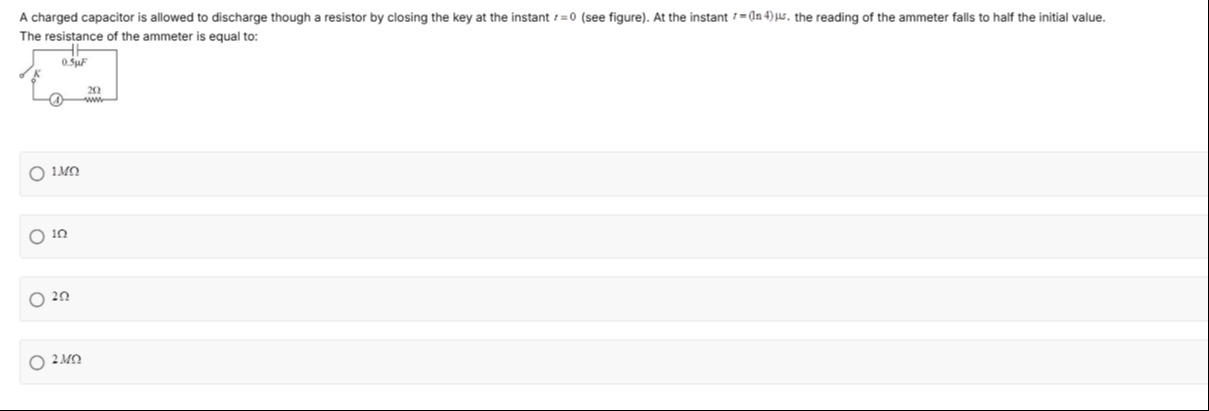Question
Question: A charged capacitor is allowed to discharge though a resistor by closing the key at the instant $\ta...
A charged capacitor is allowed to discharge though a resistor by closing the key at the instant τ=0 (see figure). At the instant τ=(ln4)μs, the reading of the ammeter falls to half the initial value. The resistance of the ammeter is equal to:

1 MΩ
1 Ω
2 Ω
2 MΩ
2 Ω
Solution
The discharge of a capacitor through a resistor follows an exponential decay. The current I(t) in an RC circuit discharging at time t is given by: I(t)=I0e−t/(RtotalC), where I0 is the initial current, Rtotal is the total resistance, and C is the capacitance.
The problem states that at time t=(ln4)μs, the current falls to half its initial value, i.e., I(t)=I0/2. So, 2I0=I0e−t/(RtotalC). This simplifies to 21=e−t/(RtotalC).
Taking the natural logarithm of both sides: ln(21)=−RtotalCt −ln2=−RtotalCt ln2=RtotalCt
This implies that the time taken for the current to halve, known as the half-life of the discharge, is t1/2=(ln2)RtotalC.
We are given: Capacitance C=0.5μF=0.5×10−6F. Time t=(ln4)μs. Since ln4=ln(22)=2ln2, we have t=(2ln2)μs=(2ln2)×10−6s. The resistor's resistance is Rresistor=2Ω. Let the resistance of the ammeter be RA. The total resistance in the circuit is Rtotal=Rresistor+RA=2+RA.
Substituting these values into the half-life equation ln2=RtotalCt: ln2=(2+RA)×(0.5×10−6F)(2ln2)×10−6s
Cancel ln2 from both sides: 1=(2+RA)×0.5×10−62×10−6
Cancel 10−6: 1=(2+RA)×0.52 1=1+0.5RA2
Multiply both sides by (1+0.5RA): 1+0.5RA=2
Subtract 1 from both sides: 0.5RA=1
Multiply by 2: RA=2Ω
The resistance of the ammeter is 2Ω.
